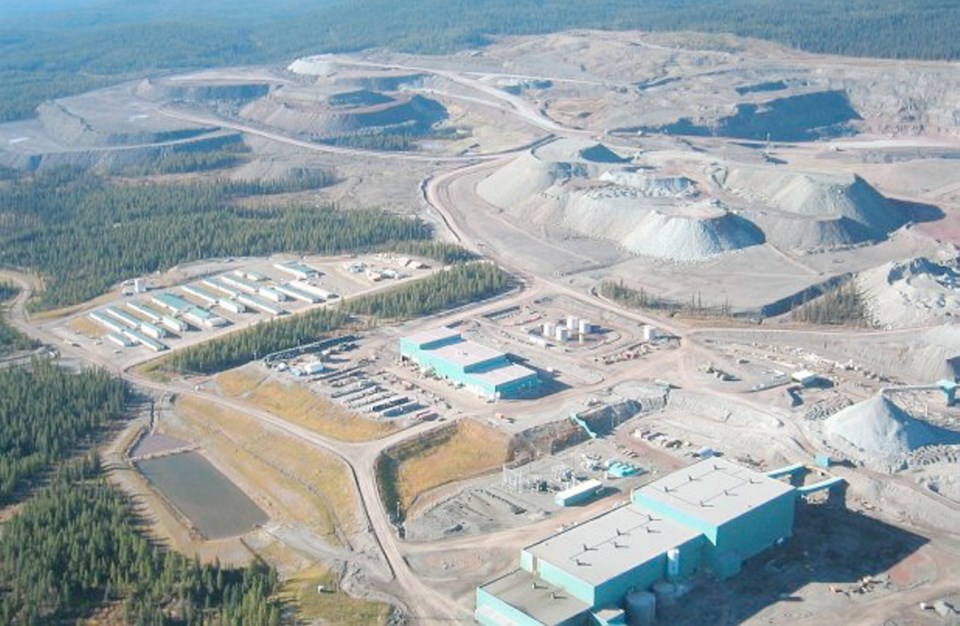The B.C. government conducted only five geotechnical inspections of about 60 open and closed mines in 2010 and 2011, according to statistics provided by the B.C. Ministry of Energy and Mines.
None of the five government inspections took place at Imperial Metals’ Mount Polley gold and copper mine. In fact, there was also no government geotechnical inspection in 2009 at the mine, whose tailings dam collapsed on Aug. 4 of this year. The collapse released millions of cubic metres of water and tailings containing potentially toxic metals into Quesnel Lake, an important sockeye salmon watershed.
There were three inspections at B.C. mines by government geotechnical engineers in 2010 (at Myra Falls on Vancouver Island, MAX Molybdenum southeast of Revelstoke, and Sirdar Granite in the Kootenays), and just two in 2011 (Max Molybenum and Kemess north of Smithers), according to data requested by The Vancouver Sun.
In the preceding decade, the average had been 24, including as high as 41 in 2003.
B.C. Energy and Mines Minister Bill Bennett said he has been unable to discover an explanation for the sudden drop-off in inspections during the two years.
“It’s not good. It’s not something that I think any government would be happy to see. It’s got to be directly related to the financial, fiscal situation that the ministry was in at the time,” Bennett said Monday.
Government revenues had declined in the aftermath of the 2009 global financial crisis.
Government geotechnical engineers visually inspect tailings dams during their inspections, as well as review dam instrumentation data and company dam safety inspections and reports, according to the mines ministry.
If problems are found, the government makes recommendations or orders.
While geotechnical inspections have increased since 2011 (including at Mount Polley mine in 2012 and 2013), the small number of government inspections at the operating and closed B.C. mines raises questions of how the government was ensuring that tailings dams were safe in 2010 and 2011.
Bennett also distanced himself from what was happening in the ministry and B.C. Liberal government at the time, noting he had been kicked out of cabinet in November 2010 after a short stint as mines minister. Bennett was appointed energy and mines minister by Premier Christy Clark in June 2013.
And Bennett said he believed it was a “stretch” to connect the lack of inspections in 2010 and 2011 to the “accident” at Mount Polley mine in 2014.
He stressed that in 2012, 2013 and 2014, the mines ministry’s budget had been increased and the number of geotechnical engineers was increased to two from one. More contract geotechnical engineers were also enlisted.
There were 26 government geotechnical inspections at mines in B.C. in 2012, 31 in 2013, and 33 to date in 2014. The last government geotechnical inspection at Mount Polley was in September 2013. No orders were issued.
A third government geotechnical engineer, hired in July, started in the first week of October.
There had been five geotechnical engineers on government staff in 2000, four in 2001 and 2002 and three in 2003. That number dropped to one between 2004 and 2011.
The Liberals came to power in 2001 after nearly a decade of NDP rule. The New Democrats have criticized the government for its cuts to inspectors and engineers.
“The assumption is from the NDP that this is the cause of the accident (at Mount Polley). We are a long ways from knowing what the cause of the accident was. Frankly, it’s just too easy to say, ‘This dam burst because there weren’t enough inspections’,” said Bennett.
“Maybe the independent (investigation) will determine that. I have said I am open to that, if that’s the case. I don’t think they are going to say that,” he said.
In an earlier interview, Bennett had said it was possible there was a period where there was no geotechnical engineer on staff. He said Sunday the figure of one geotechnical engineer during 2010 and 2011 was correct.
He also said that “obviously” having one B.C. government geotechnical engineer was not enough.
Glenda Ferris, a longtime community advocate in the Houston area in northwest B.C., says she believes there was a period of time when the province had no geotechnical engineer on staff.
Ferris, a member of a public advisory group for the closed Equity Silver mine, said she was told a few years ago by mines ministry officials there was no geotechnical engineer available to inspect the mine near Houston.
“That condition lasted about 18 months,” said Ferris.
She noted that despite requests, she has not been provided a copy of a government geotechnical inspection of the acid-generating mine for three years.



